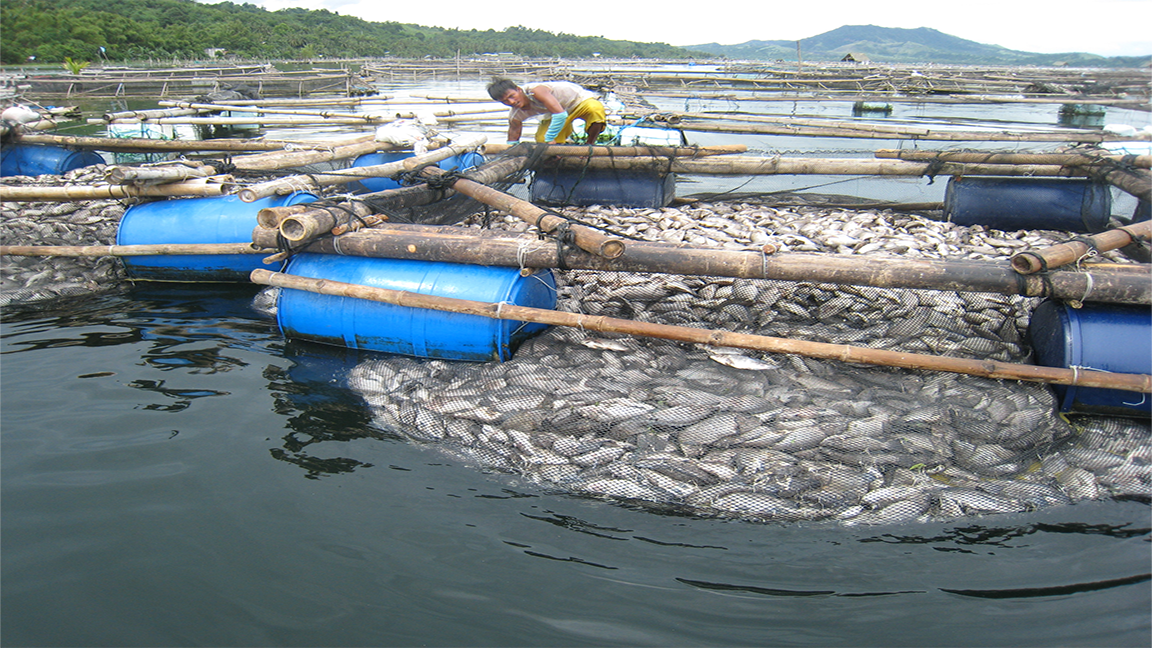STO TOMAS CITY- CONCERNED that the unpredictable restiveness of Taal Volcano coupled with lower than normal water temperature levels at Taal Lake could result in millions of pesos in losses, the regional director of the Bureau of Fisheries and Aquatic Resources-Calabarzon has advised fish pen operators (FPO) to harvest their fish stocks as soon as possible.
Sammy Malvas, BFAR Region 4A Director, said it is a must FPOs must harvest as soon as possible, because stocks are good and still marketable like milkfish, tawilis, tilapia, and the likes before disaster strikes, that could lead to millions of pesos in losses.
Oxygen level deficiency
If not, Malvas advised them to at least for them to put up oxygen tanks and long perforated hoses intended to augment the current oxygen level deficiency detected and monitored by BFAR-R4A amid Taal’s heightened activity.
At present, Alert Level 3 is still hoisted at Taal meaning a major eruption remains a big possibility although for the last 24 hours only 22 volcanic earthquakes were recorded including 18 tremors lasting one to 11 minutes.
Sulfur Dioxide flux (SO2) remains manageable at 1,142 tonnes per day now since going up to record highs of 26,000 previously.
“Pinaaalahanan natin ang lahat ng local government units (LGUs) na nakapalibot sa Taal na paigtingin ang pagmamatyag sa kanilang alagang isda at mag-ani na ng marketable stocks sa itinakdang “window hour” gayundin ang paggamit ng oxygen tanks, pumps at engine sets upang maiwasan ang pagkakaroon ng fish mortality of fish kill,” Malvas said.
He added that based on their investigation, the quality of water in Taal in terms of dissolved oxygen are from 4.48 to 4.49 mg per liter inside fish cage areas and open water, respectively.
Notch lower
He explained that the said findings were a notch lower against the standard level of 5.0 mg/l.
And should it go a notch lower, it could already spell disaster to fingerlings and even fully grown fishes into a massive fish kill incident.
Opposite of the low dissolved oxygen level is the high concentration of ammonia, Malvas explained saying it has now 0.11 to 0.15 and sulfide at 0.02 to 0.29 mg/liter.
Both are over and above the allowable standards and are considered risky and highly dangerous to fishes inside and out of fish cages.
Window hour
In coordination with the Department of Environment and Natural Resources (DENR), the BFAR drew up a “window hour” for all FCO and their staff from 8 a.m. until 2 p.m. within which they can harvest marketable fishes.
The DENR said henceforth, the “window hour” shall be followed as standard operating procedure (SOP) for FPOs once Taal’s alert level goes up to No. 3 or higher.
In all, Taal Lake measures 23,420 hectares but the DENR said only 2,342 hectares of which is allocated to fish pen operations.
At present structures of fish pens inside the lake already reached around 5,000 of aquaculture structures, the DENR said.
Persons allowed
DENR Region 4A Executive Director Nilo Tamoria averred that only the FPO and his/her designated staff are allowed to venture into the lake from 8 in the morning until 2 p.m.
He added that only one person is allowed per two fish cages to feed the fishes and collect dead fishes and for their proper disposal.
On emergency harvesting, meantime, FPOs can only deploy 15 individuals, and if ever, there is massive fish kill, they are accordingly allowed up to 10 persons.
Proper documentation of persons deployed are also necessary that they must secure with the local government unit and from the Taal Volcano Protected Landscape office.
It was also gathered that the “window hour” also applies for the BFAR to follow and so with the Philippine Institute of Volcanology and Seismology (Phivolcs) for their observation works and other related undertakings at the lake.
But the regional executive director stressed that the window hour excludes “ang mga aktibidad tulad ng pagpapatupad ng batas at pagsagip at/o pagliligtas ay hindi saklaw ng nasabing window hours.”
At the same time, Tamoria stressed the DENR has the police power to apply and slap penalties against violators such as verbal reprimand and warning for first offenders, and cancelation of permits to operate for second offenders.
The DENR also encouraged individuals and residents located near Taal to stay vigilant, and inform its office immediately of violations incurred by FPOs.
Damages
Meanwhile, damages to crops and aquaculture already reached P24.490 million or equivalent to 1,173,301 kilograms of bangus, tilapia, tilapia fry, and bangus fingerlings.
S02 emissions also wreaked havoc on crops where at least 58.93 hectares of rice fields, kalamansi and cassava wilted and wasted amid the increased sulfur dioxide content in the air no thanks to Taal’s latest unrest. (IAm/OpBats)
